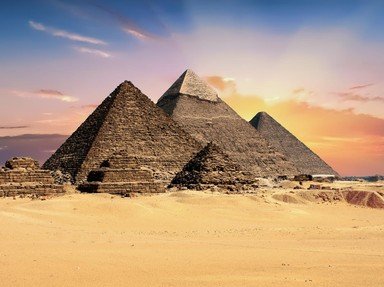Quiz Answer Key and Fun Facts
1. During what stage in Egyptian history was the step pyramid built?
2. The first step pyramid in Egypt was constructed for the pharaoh Netjerykhet, who was eventually given what other name?
3. Who was the architect of the step pyramid in Egypt?
4. The step pyramid in Egypt was built in six stages. What term, which also describes early Egyptian tombs, is used to denote each level?
5. What building material was used for the facade of the Egyptian step pyramid?
6. In what ancient Egyptian necropolis was the step pyramid build?
7. Which of the following was NOT found in the complex where the Egyptian step pyramid was located?
8. The step pyramid in Egypt is considered to be the oldest large-scale cut stone construction in the world.
9. The king's body was found inside the burial chamber of the step pyramid in Egypt.
10. Which archaeologist gained renown by working at the Egyptian step pyramid complex site?
Source: Author
ponycargirl
This quiz was reviewed by FunTrivia editor
bloomsby before going online.
Any errors found in FunTrivia content are routinely corrected through our feedback system.

